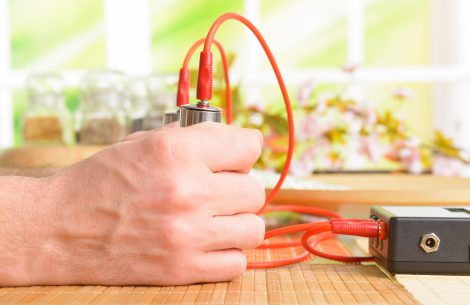When you are excited or upset, your body may respond by raising its blood pressure, making the heart beat faster, or tensing specific muscles. These, unlike walking, chewing food, or shaking someone’s hand, are involuntary body responses. They happen without your awareness.
Biofeedback therapy helps you to become aware of what is happening in your mind to control automatic response better. It’s based on the theory of mind over matter. It’s a way of teaching you how to control physiological responses that are mentally and physically connected. It is used to improve both mental and physical health conditions.
The Mechanisms of Biofeedback
Biofeedback therapy is noninvasive, and there are no medications involved. Electrodes are attached to the skin on specific parts of the body to monitor physiological signs. Specialized equipment measures and monitors heart rate, body temperature, muscle tension, and other responses.
A biofeedback therapist measures the bodily responses to different stimuli. By identifying mental processes and physical reactions along with relaxation techniques, you learn to regulate unconscious body processes.
For example, a biofeedback therapist may notice that your heart rate goes up in a particular situation. She can then teach you how to respond differently to the stimulus using mental exercise or relaxation techniques. When you view the positive results on the monitor, it encourages more positive responses and reactions.
After the therapist interrupts the measurement, she helps you to find relaxation techniques that replace conditioned responses. The goal is for the patient to identify patterns and learn to relax or control bodily reactions on their own.
Sessions are usually scheduled for 30 or 60 minutes. Afterward, you will be given “homework” to do daily in the form of mind and relaxation activities that reinforce what was learned during the appointment. The number of sessions needed to depend on the condition being treated, how quickly you respond to biofeedback, and other factors.
Types of Biofeedback
Biofeedback is divided into three main types categorized by what they measure:
- Changes in the skin temperature are called thermal biofeedback.
- Electromyography processes muscle tension.
- Neurofeedback (EEG biofeedback) measures brain activity.
Benefits of Biofeedback
Biofeedback has been shown to help with several conditions, such as
- Migraine headaches – A 2015 Japanese study found biofeedback was helpful in reducing the number of and severity of symptoms. Harvard Medical Schools research showed that many patients were able to reduce their dependence on medication.
- Psychiatric Disorders – The Institute of Psychiatry at King’s College in London found in a review of data that biofeedback therapy may be an effective treatment for some mental health disorders. The review’s results suggest that it may be helpful in treating autism spectrum disorders, eating disorders, anxiety, dissociation, depression, and schizophrenia.
- Pain – Biofeedback is considered an effective treatment for chronic pain and pain from injuries. It is suggested for pain from diabetic neuropathic pain, cancer, and chronic muscle tension.
- Anxiety – Anxiety is the health conditions that biofeedback has shown to be very successful in treating. It’s often used in conjunctions with cognitive behavioral therapy.
- Heart Health – The Cleveland Clinic Journal of Medicine suggest that biofeedback-assisted stress management (BFSM), a form of biofeedback designed for the management of heart disease, may help those with failing hearts.
- Insomnia and ADHD – The electroencephalography (EEG) biofeedback is commonly used to treat insomnia and ADHD symptoms.
- Asthma – A 2004 study reported in the journal, CHEST, showed that heart rate variability (HRV) biofeedback was a promising complementary therapy for asthma. Patients in the study were able to reduce their dose of inhaled steroids.
The purpose of biofeedback is to teach the patient how their body works to develop better control of processes to improve responses to health conditions. It is considered relatively safe. However, always discuss new therapies with your primary care provider.
This information is provided for educational purposes only. It is not intended to diagnose, treat, prescribe, or recommend any specific therapy.
References:
- Hitti, Miranda. Biofeedback for Asthma? Retrieved from https://www.webmd.com/asthma/news/20040809/biofeedback-for-asthma
- Levy, Jillian, CHHC. Biofeedback Therapy: A Proven Treatment for 16+ Medical Conditions. Retrieved from https://draxe.com/biofeedback-therapy/.
- Krans, Brian. Biofeedback. Retrieved from https://www.healthline.com/health/biofeedback.
- Schoenberg, PL, David, AS. Biofeedback for psychiatric disorders: a systematic review (June 2014). Retrieved from https://www.ncbi.nlm.nih.gov/pubmed/24806535.
- Wilson, Debra Ros, Ph.D. MSN, RN. What is biofeedback therapy and who can benefit? (August 8, 2018). Retrieved from https://www.medicalnewstoday.com/articles/265802.php.

